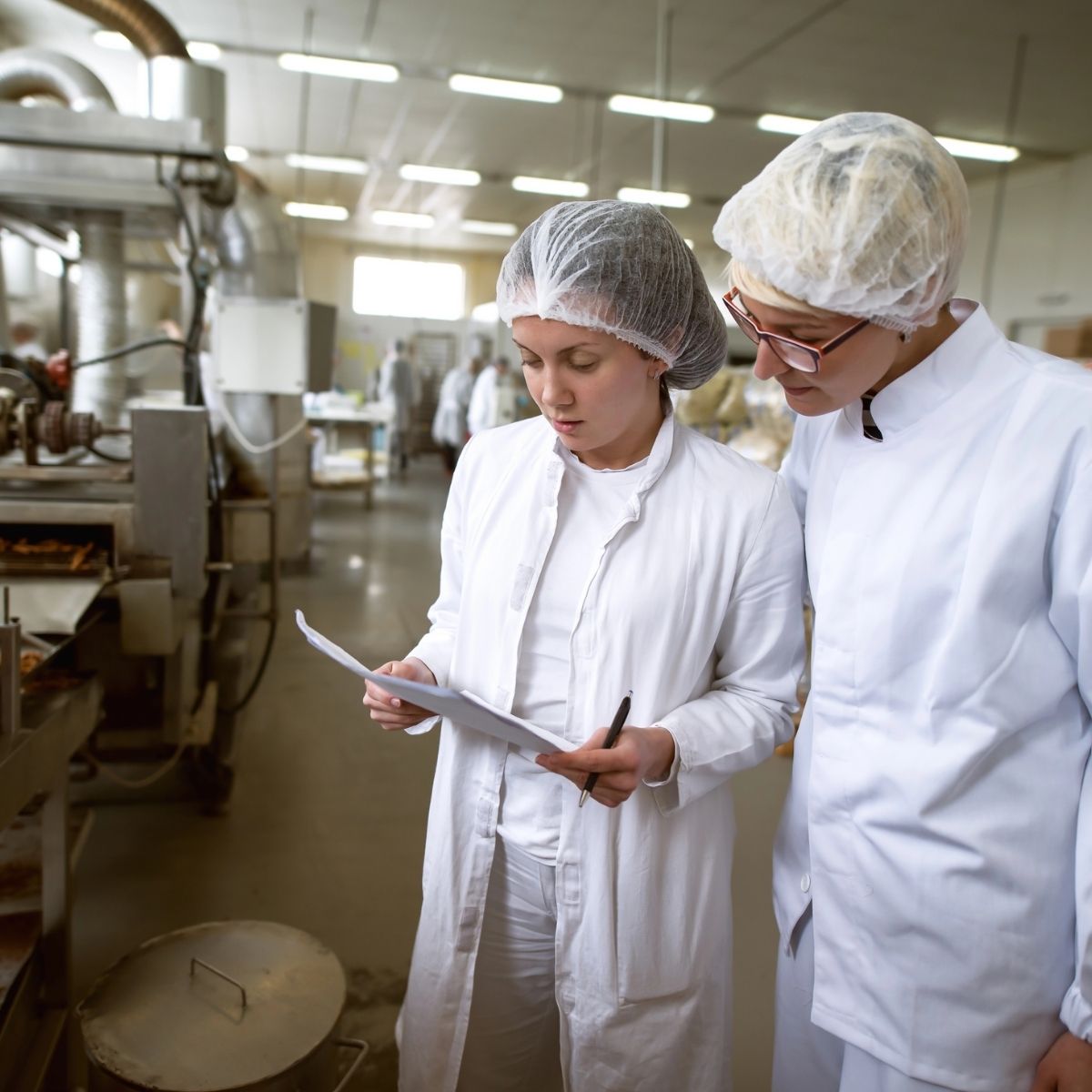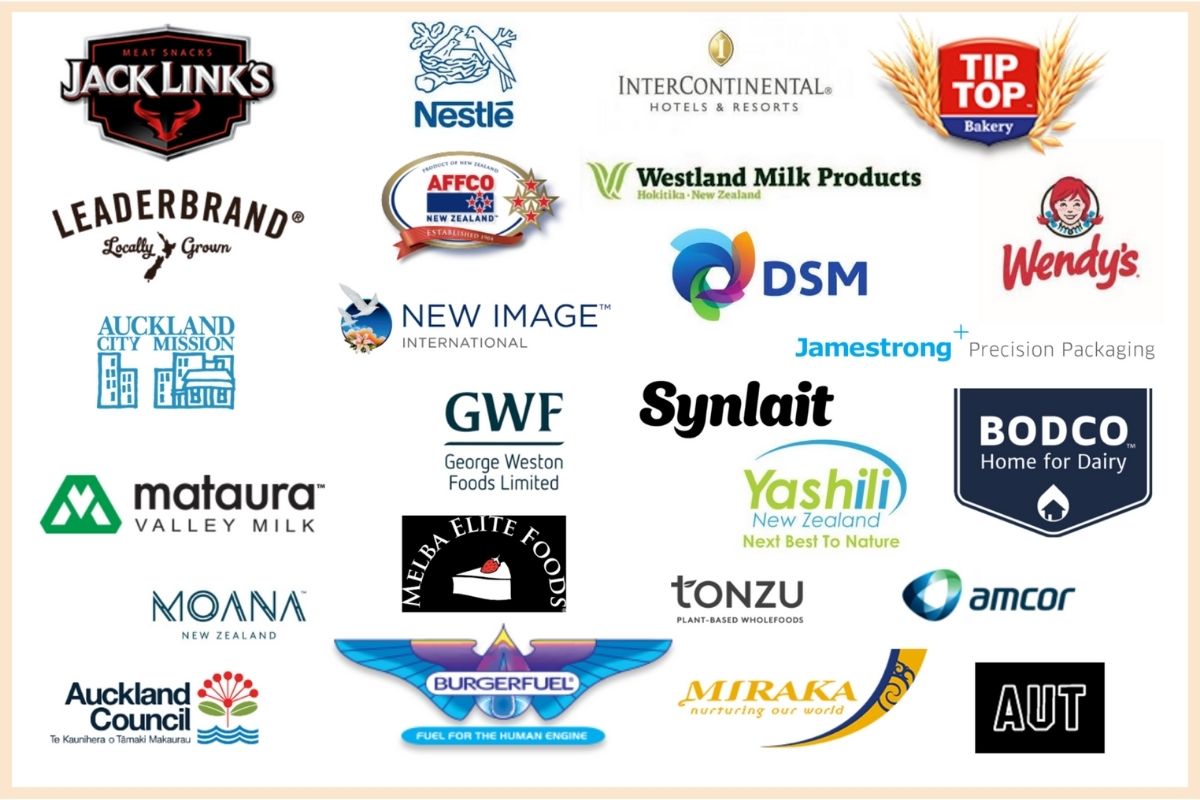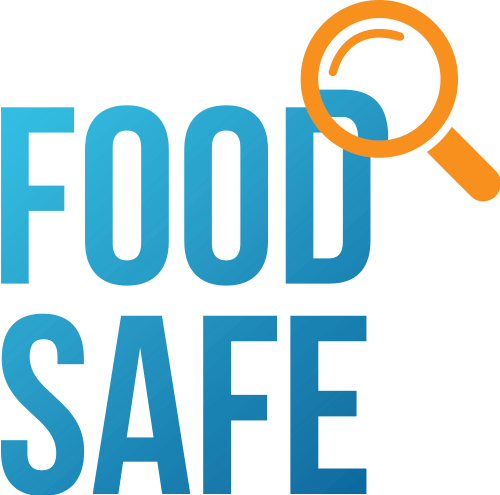Our problem-solving training is designed for a wide range of operators and food companies who want to enhance their decision-making and analytical abilities. Ideal for operators, team leaders, senior executives and business owners.
Course Cost: POA
About our Problem-Solving Course
Our Problem-Solving Training provides operators, supervisors, and managers with practical tools to shift from a reactive to a proactive mindset. This training helps your team confidently identify root causes, take corrective action, and prevent issues from recurring — all while strengthening your food safety and quality systems, reducing NCs and minimising cost blow-outs.
Our training is ideal for operators, supervisors, QC & QA leads, managers, senior executives leading ‘Quality Improvement’ projects, entrepreneurs and business owners.
- Course duration: Ranges from 1-day to multi-day workshops, depending on the level of customisation
- Course types: Basic & Advanced
- Delivery options: LIVE Online via Zoom or in-person at company site
- Training by: Qualified ISO 22000 & 9001 Lead Food Safety Auditor
- Approach: Hands-on practical problem-solving and NC incident studies
Learners gain:
✅ A Problem-Solving Training Certificate
Effective problem-solving is more than ticking a box — it’s your competitive advantage!
Training benefits:
✅ Reduces the risk and costs of recurring problems while increasing productivity
✅ Helps learners respond to solve problems and non-conformances with clarity
✅ Builds a culture of continuous improvement and Quality-First-Mindset
✅ Identifies underlying root causes of problems – essential for operational excellence & 6σ
Basic Problem-Solving Topics
- Problem-solving within a lean thinking approach
- Where problem-solving and CAPA fit within a HACCP and risk-based approach to FS management
- Critical thinking skills – First Principles
- What is a problem?
- Why practical problem-solving?
- Problem categorisation
- Types of problem categorisations in food companies
- Food safety problem-solving approaches vs. generic lean thinking
- Problem identification and logging
- Identification of facts (what, where, when)
- Team selection
- Containment of the problem
- Obtaining details/data – Go, see, think, do!
- Identification of root cause and pitfalls
- Framing the problem – actions & conditions
- Solution identification aligned with goals
- Problem-solving approaches
- Ishikawa (Fishbone) diagram & 5 Whys
- Potential issues/solutions beyond fishbone & 5W1H
- Generic Lean vs. Food Safety – alignment and targeting conflicts
- Solution risk analysis
- Use of Artificial Intelligence (AI) tools to supplement analysis
- Action plans – Closing out NCs & deviations
- Preventing re-occurrence – CAPA
- Learning loops & change management that sticks
Learn by doing: Training includes practical components where learners solve individual and team problems
Follow-up support and accountability: Options for “hand-holding” post-training, including follow-up sessions via video conference or in-person to maintain momentum are available.

Advanced Problem-Solving Topics
Productivity overview, integrating continuous improvement (Kaizen) with structured problem resolution
Recognising when food safety risks override pure lean efficiency gains
Critical thinking skills – First Principles
Breaking complex problems down, with evidence-based questioning and using logic chains
What is a problem?
Differentiating between symptoms, root causes, and system gaps
Recognising hidden problems that erode quality or safety over time
Why practical problem-solving?
Moving beyond theory to structured, real-world application
Problem categorisation
Sorting problems by severity, frequency, and impact, using risk matrices, recognising ‘chronic’ vs. ‘acute’ problems in food operations
Types of problem categorisations in food companies
Food safety issues, quality defects, process inefficiencies & regulatory problems
Food safety problem-solving approaches Vs pure lean thinking
Risks of ‘over-leaning’ critical control processes
Problem identification and logging
ID of facts (what, where, when)
Applying the 5W1H method, distinguishing between facts, opinions, and assumptions and mapping incidents visually (process flows)
Team selection
Dynamics to avoid ‘groupthink’ or hierarchy bias
Containment of problem
Obtaining details/data – Go, see, think, do!
Applying Gemba principles and avoiding assumptions by verification
ID of Root-Cause
Framing problem – actions & conditions
Using models like HFACS (Human Factors Analysis), where applicable, and avoiding a ‘quick-fix’ mindset
Solution ID alignment with goals
Aligning corrective actions with food safety, quality, and operational KPIs
Problem-solving approaches – Pros & Cons
Structured thinking, Plan-Do-Check-Act (PDCA), DMAIC, 8D, Apollo & Pareto principles
Ishikawa Fish Bone & 5 Why
Recognising the limitations of tools for complex, multi-layered problems
Matching the right approach with the right problem, example: RCA/SPC – used for product quality issues
Potential issues/solutions
Using ‘what if’ scenario testing to stress-test solutions
Lean vs. Food Safety – alignment and conflicts
Building a culture that prioritises food safety alongside efficiency
Solution risk analysis
Using Failure Mode and Effects Analysis (FMEA) where applicable
Action plans
Developing SMART (Specific, Measurable, Achievable, Relevant, Time-bound) action plans
Prevent re-occurrence
Embedding learning into Standard Operating Procedures (SOPs) and training
Learning loop & change management
Building organisational resilience through continuous learning
Applying structured change management
Learn by doing: Training includes practical components where learners solve an individual and team problem

Suitable for
- Operators
- Supervisors
- QC & QA leads
- Managers, senior executives, and GMs leading ‘Quality Improvement’ projects
- Entrepreneurs and business owners
About your trainer
The course programme is delivered by Food Safe’s Managing Director, Lead-trainer & Food Safety Expert, Keith Michael who holds:
- A Masters Degree in Operations Management
- Technical Food Processing, Food Safety, and Audit Competencies
- Dairy Manufacturing Competencies: Technical & Specialised Operations
- Certificate in Company Direction from the Institute of Directors (IOD), New Zealand
Keith has presented papers at Food Safety Conferences and brings this cross-sector learning into training.
Keith has many years of experience as a company director where he has assisted companies with Food Safety Compliance, Risk Audit, and closing of gaps identified with smart purpose-built competency training.
View Keith’s profile on LinkedIn.

FAQs
What is continuous improvement?
Continuous improvement refers to the ongoing effort to enhance products, services, or processes by making incremental improvements over time. It’s a key concept in methodologies like Lean and Six Sigma.
Food Safe’s advice for food businesses: Adopting a Six Sigma Lean strategy involves ensuring that the entire team understands the key performance indicators and that these are both aligned with production quality and regulatory compliance.
How does Lean Six Sigma work?
Lean Six Sigma combines Lean’s focus on waste reduction with Six Sigma’s focus on reducing defects. It uses a data-driven approach to improve processes, increase efficiency, and ensure quality.
Food Safe suggests adopting a careful and balanced strategy for waste reduction, especially when considering the trade-off between speed and thoroughness, as well as one’s tolerance for risk while making informed decisions to enhance efficiency
What are the benefits of continuous improvement?
The benefits of continuous improvement include increased efficiency, higher product quality, reduced waste, improved employee engagement, and enhanced customer satisfaction.
Food Safe recommends that food companies implement rigorous food safety protocols as part of their continuous improvement strategy, ensuring compliance with regulatory standards and fostering consumer trust.
References: https://pmc.ncbi.nlm.nih.gov/articles/PMC10839956/
What is Kaizen in continuous improvement?
Kaizen is a Japanese term that means “change for better.” It’s a philosophy of continuous, incremental improvements involving all employees in an organization, aimed at enhancing productivity and reducing waste.
Food Safe’s tip for food companies – it is vital to implement strict hygiene and safety protocols during Kaizen initiatives. By ensuring that improvements do not compromise food safety standards, companies can enhance operational efficiency while maintaining high-quality product standards that meet regulatory requirements.
Reference: https://pmc.ncbi.nlm.nih.gov/articles/PMC12026918/
What is the PDCA cycle?
The PDCA cycle (Plan-Do-Check-Act) is a four-step iterative process used for continuous improvement, helping organizations implement, review, and adjust their processes over time.
Food Safe’s tip for food companies is to incorporate rigorous food safety assessments into each phase of the PDCA cycle, ensuring that product quality and compliance with health regulations are consistently monitored and improved at every stage.
What are process improvement tools?
Process improvement tools include techniques like Root Cause Analysis, Process Mapping, Value Stream Mapping, and Lean tools, which help organizations identify inefficiencies and areas for improvement.
Food Safe’s tip for food companies is to implement Hazard Analysis and Critical Control Points (HACCP) to ensure that safety and quality are integral to process improvements, thereby addressing both operational efficiency and compliance with food safety standards.
What is the difference between Lean and Six Sigma?
Lean focuses on reducing waste and improving speed, while Six Sigma aims to reduce process variation and defects. Both are methodologies used for continuous improvement, but they have different approaches.
Food Safe’s tip for food companies is to implement stringent quality control measures at each stage of the production process to ensure compliance with food safety standards, thus minimising defects and maximising quality while aligning with Lean and Six Sigma principles.
How can continuous improvement help reduce costs?
Continuous improvement helps reduce costs by eliminating inefficiencies, minimizing waste, optimizing processes, and improving product quality, which leads to fewer defects and less rework.
Food Safe’s tip for food companies is to implement robust traceability systems that enhance quality control, ensuring that any non-compliance or incidents can be quickly addressed, thus further reducing waste and safeguarding brand integrity.
Why is employee engagement important in problem solving and continuous improvement?
Employee engagement is critical because continuous improvement relies on input and participation from all levels of an organization. Engaged employees are more likely to contribute ideas for improvement and be proactive in driving change.
Food Safe’s tip for food companies is to implement regular training sessions focused on food safety and quality standards, which can further enhance engagement by emphasising the importance of each employee’s role in maintaining high standards, fostering a culture of accountability and pride in the product.
what is a Quality-First-Mindset?
A Quality-First Mindset represents a philosophy or approach within an organization that prioritizes quality above all else in its operations, decision-making processes, and interactions with customers. It focuses on consistently delivering high-quality products or services by embedding quality assurance practices throughout the business’s culture, methods, and strategic planning. Here are several essential elements of a Quality-First Mindset:
Leadership Commitment: Leaders demonstrate their dedication to quality by making it a key factor in every decision, inspiring employees to adopt the same mindset. This includes fostering a culture that values high standards and accountability.
Customer Focus: Recognising and fulfilling customer needs and expectations is fundamental to the organisation’s activities. Ongoing feedback mechanisms help enhance products/services and address issues before they affect customers.
Process Improvement: Regularly assessing and refining processes to eliminate inefficiencies, minimise waste, and ensure that all aspects of production or service provision adhere to established quality benchmarks.
Empowerment of Employees: Employees receive the necessary tools, training, and authority to make decisions that guarantee quality throughout each stage of the process. This promotes shared responsibility for maintaining quality.
Data-Driven Decisions: Utilising data and metrics to monitor performance, spot potential problems early on, and make informed choices that elevate product quality and enhance customer satisfaction.
Continuous Learning: All employees are encouraged to continually develop their skills and adapt over time, contributing to a culture that emphasises ongoing improvement.
Proactive Problem Solving: Emphasising the identification of possible issues before they occur empowers teams to resolve them swiftly and effectively rather than merely reacting after problems arise.
By embracing a Quality-First Mindset, organisations develop a culture where quality becomes an essential part of their brand identity, operations, and relationships with customers.
Food Safe’s tip for food companies is to implement regular cross-functional team meetings to identify process inefficiencies and collaboratively establish targeted improvements.
what is a culture of continuous improvement?
A Culture of Continuous Improvement represents a mindset within an organisation that encourages persistent efforts to enhance processes, products, and services. This approach aims to continually discover methods to boost efficiency, quality, and performance in a manner that is sustainable and gradual. It promotes the idea that all employees, from management to staff, should regard improvement as a fundamental aspect of their daily responsibilities. Key features of this culture include:
Dedication to Advancement: The organisation understands that no process, product, or service can be deemed “perfect.” There is always potential for enhancement and optimization, fostering an ongoing evolution mindset.
Employee Engagement: Team members are empowered and motivated to propose enhancements, implement changes, and partake in decision-making. The value placed on everyone’s contributions nurtures a collaborative atmosphere for development.
Focus on Learning: Organisations that adopt a continuous improvement culture place significant emphasis on learning opportunities, training programs, and skill enhancement. This commitment ensures employees possess the necessary tools to foster innovation and execute improvements.
Data-Driven Choices: Performance metrics, feedback mechanisms, and analytics are utilised to pinpoint areas needing improvement. Decisions derive from factual information rather than assumptions, guaranteeing that the changes enacted are meaningful and quantifiable.
Gradual Enhancements: Instead of concentrating on sweeping changes all at once, this culture advocates for small-scale adjustments made consistently over time. These incremental advances often yield substantial long-term benefits.
Underlying Cause Investigation: When challenges occur, the organisation strives to uncover and resolve root causes rather than merely addressing symptoms. This proactive approach ensures issues are not just remedied but also prevented from resurfacing.
Emphasis on Innovation: A continuous improvement environment encourages creativity and experimentation among employees. They are invited to think innovatively, explore new concepts, and propel innovation forward.
Leadership Endorsement: Leaders in organisations committed to continuous improvement actively champion change efforts by providing necessary resources while demonstrating expected behaviours. They cultivate an atmosphere where employees feel safe navigating experiments and learning from failures.
Feedback Mechanisms: Regular input from customers, staff members, and stakeholders is gathered systematically and utilised as a basis for driving enhancements. This feedback informs decisions regarding what modifications are needed most urgently.
Sustainability of Improvements: Upgrades are perceived not as temporary remedies but as enduring transformations ingrained in the organisation’s practices and culture.
In summary, embracing a Culture of Continuous Improvement fosters an energetic setting where change is welcomed enthusiastically; challenges prompt proactive responses; every member contributes actively towards positive transformation.
Food Safe’s tip for food companies is to encourage open communication and collaboration among all team members to foster innovative solutions and enhance the collective commitment to continuous improvement.
About Food Safe
Food Safe Ltd is Accredited by the New Zealand Government + is a Category 1 NZQA-Registered PTE. Training complies with the Food Safety Bylaws and Verifier Audits right across New Zealand.
Our food safety training is trusted by both well known New Zealand and Global food companies and heaps of small teams too!
Food Safe’s advisory committee includes leading university microbiology experts, operations, quality and compliance managers, and governance experts. For even more information about Food Safe and the companies we work with, click here
Why Choose us for your Training?
- Encourages a unique consideration of potential friction points related to generic lean practices with food safety risk minimisation, including:
- Balancing speed and thoroughness
- Improving understanding of risk tolerance, standardisation of CAPA processes, and the need for adaptation.
- Will assist in improving response time to NCs and close-outs.
- Enable stronger internal and external communication in the context of deviations
- Is simplified and visual, and supportive of implementing the learning in real-life scenarios
- Is delivered by a trained ISO 9001 & 22000 lead auditor
- Is delivered by a trainer with first-hand knowledge and experience in high-risk operations

120
1000
100
How we work with companies
HOW IT WORKS
Companies we work with































